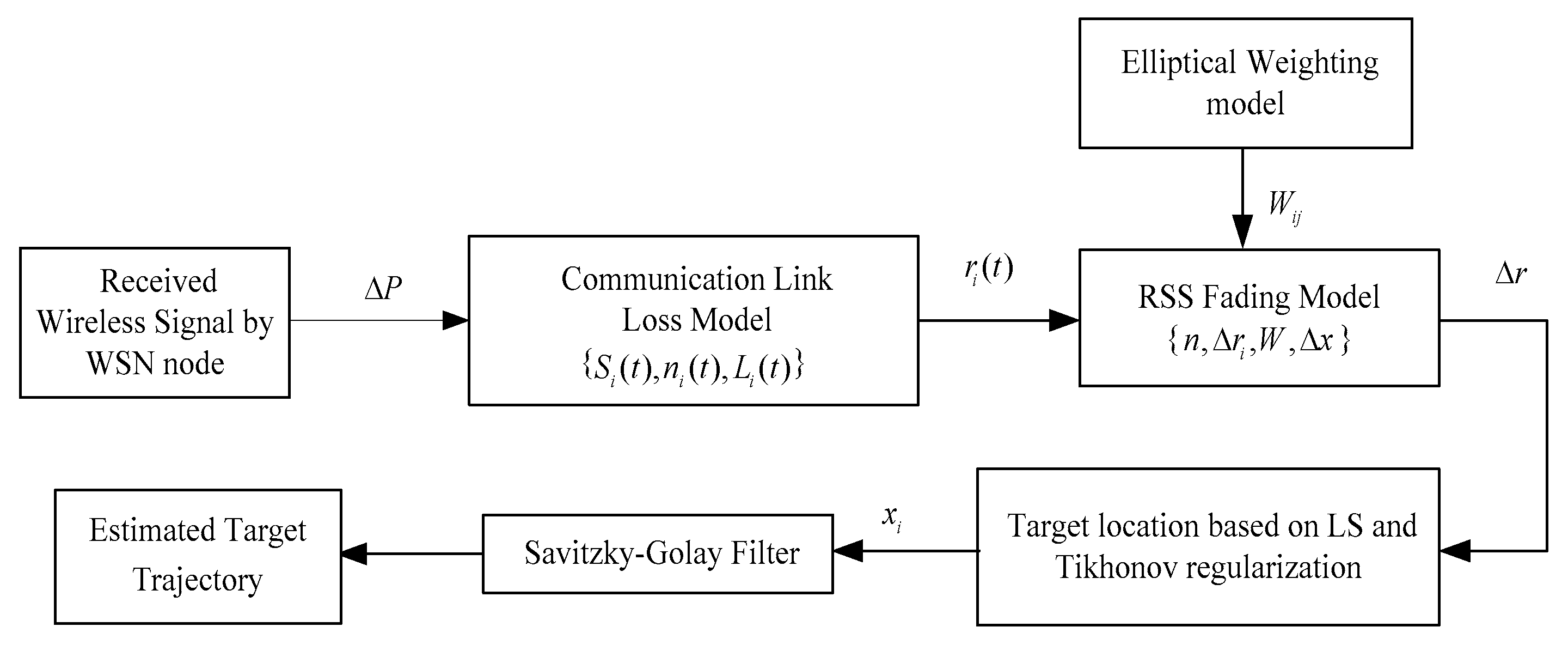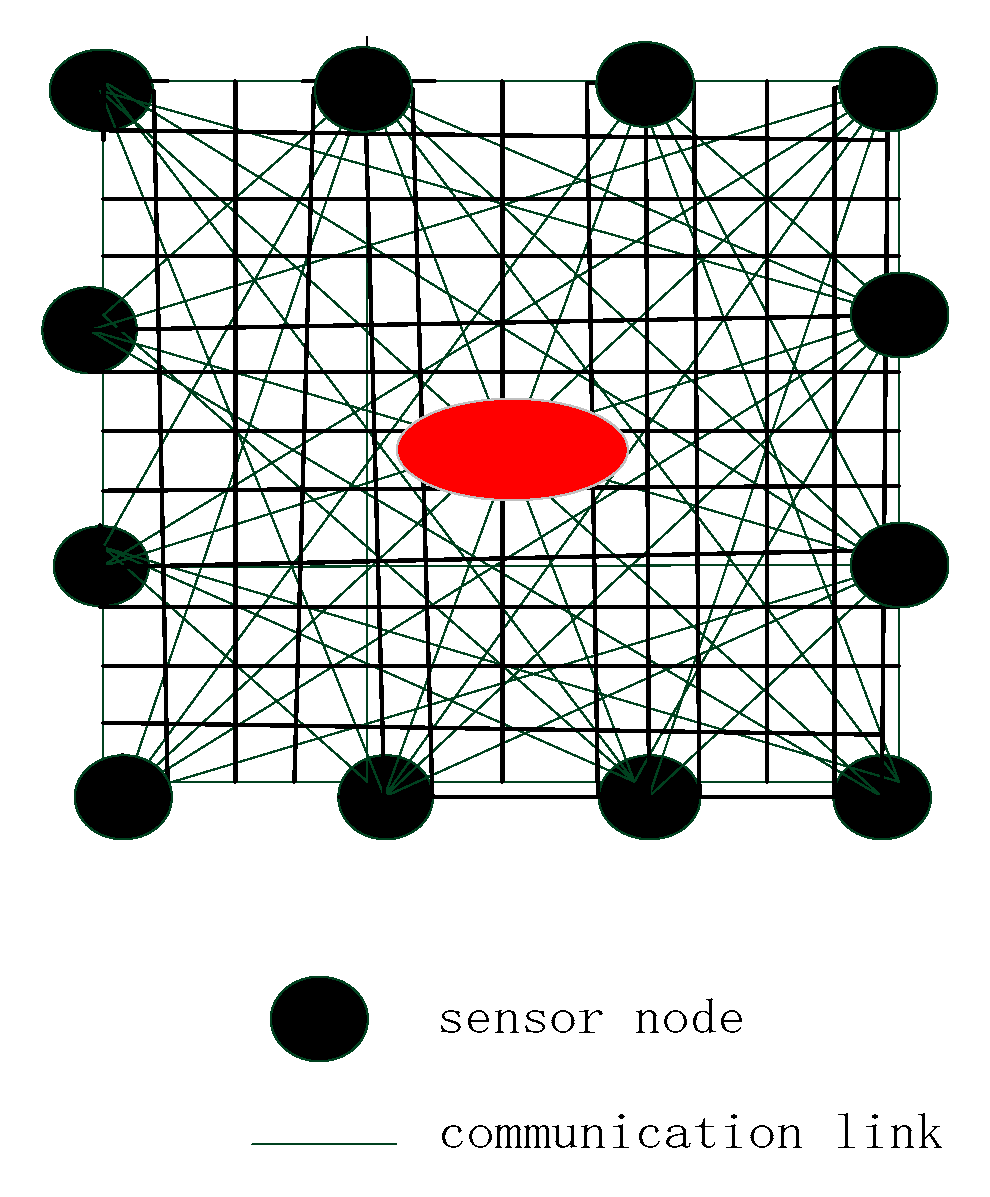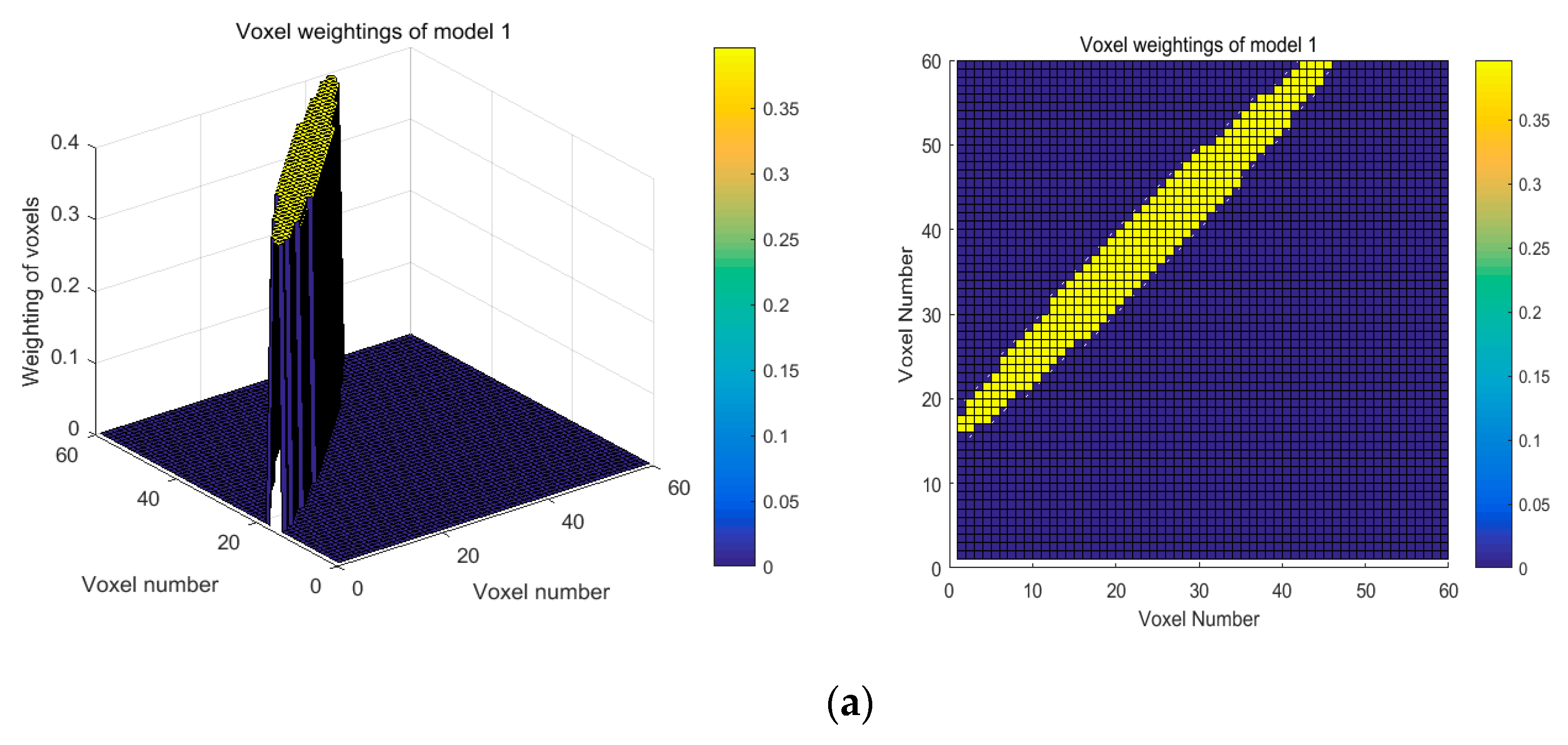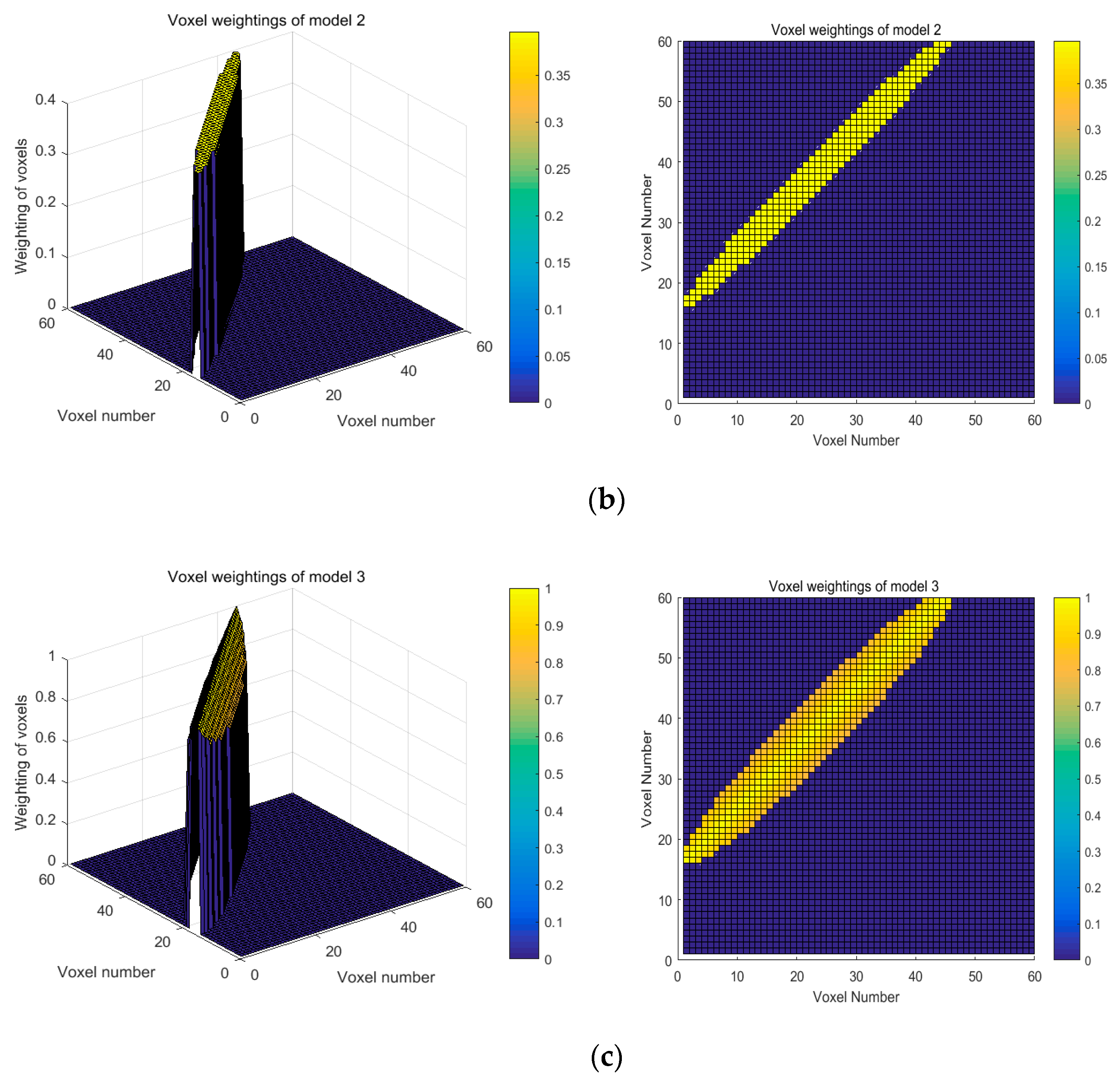ARTI (Adaptive Radio Tomographic Imaging): One New Adaptive Elliptical Weighting Model Combining with Tracking Estimates
Abstract
:1. Introduction
2. Adaptive Radio Tomography Imaging
2.1. Introduction of RTI
2.2. Adaptive Elliptical Weight Model
2.3. Positioning Estimation
3. Experiment Results
3.1. Experiment Design
3.2. Tomographic Reconstruction
3.3. Filtering Parameter Selection
3.4. Tracking Performance Analysis
4. Conclusions
Author Contributions
Funding
Acknowledgments
Conflicts of Interest
References
- Wilson, J.; Patwari, N. Radio tomographic imaging with wireless networks. IEEE Trans. Mob. Comput. 2010, 9, 621–632. [Google Scholar] [CrossRef]
- Patwari, N.; Agrawal, P. Effects of Correlated Shadowing: Connectivity, Localization, and RF Tomography. In Proceedings of the IEEE International Conference on Information Processing in Sensor Networks, St. Louis, MO, USA, 22–24 April 2008; pp. 82–93. [Google Scholar]
- Wilson, J.; Patwari, N. Through walls: Motion tracking using variance-based radio tomography networks. IEEE Trans. Mob. Comput. 2011, 10, 612–621. [Google Scholar] [CrossRef]
- Hamilton, B.R.; Ma, X.; Baxley, R.J.; Matechik, S.M. Propagation Modeling for Radio Frequency Tomography in Wireless Networks. IEEE J. Sel. Top. Signal Process. 2014, 8, 55–65. [Google Scholar] [CrossRef]
- Tian, X.; An, J.; Wang, Z. A Const-Eccentricity Elliptical Model in Radio Tomography Imaging. J. Beijing Univ. Technol. 2015, 35, 725–729. [Google Scholar]
- Lei, Q.; Zhang, H.; Sun, H.; Tang, L. A New Elliptical Model for Device-Free Localization. Sensors 2016, 16, 577. [Google Scholar] [CrossRef] [PubMed]
- Hong, Y.-T.; Wu, C.-X.; Miao, H.-M. Object tracking using radio tomography imaging and Kalman filter. Inf. Technol. 2015, 55–58. (In Chinese) [Google Scholar] [CrossRef]
- Zhu, C.; Chen, Y. Distance attenuation-based Elliptical Weighting Model in Radio Tomography Imaging. IEEE Access 2018, 6, 34695. [Google Scholar] [CrossRef]
- Wang, B.-H. The Filtering Technique of Gas Logging Curve Based on Savitzky-Golay Algorithm. West-China Explor. Eng. 2017, 29, 30–31. (In Chinese) [Google Scholar]
- Ca, T.-J.; Tang, H. Summary of least squares fitting principle for Savitzky-Golay smoothing filter. Digit. Commun. 2011, 38, 63–68. (In Chinese) [Google Scholar]
- Lei, L.-P. Curve Smooth Denoising Based on Savitzky-Golay Algorithm. Comput. Inf. Technol. 2014, 22, 30–31. (In Chinese) [Google Scholar]
- Zhang, B.; Zhou, L.-F. Fault Diagnosis of Rolling Bearings Combining Savitzky-Golay Filter with Local Mean Decomposition. Mach. Des. Manuf. 2017, 3, 192–196. (In Chinese) [Google Scholar]
- Liu, H.; Wang, Z.; Xiang-yuan, B.; Jian-ping, A. Wireless tomography based on sensor networks. J. Beijing Inst. Technol. 2013, 33, 1155–1160. [Google Scholar]
- Xu, H.; Ke, W.; Yu, K. Radio Tomographic Imaging Based on Improved Ellipse Weight Model. Hans J. Wirel. Commun. 2018, 8, 97–105. [Google Scholar] [CrossRef]












© 2019 by the authors. Licensee MDPI, Basel, Switzerland. This article is an open access article distributed under the terms and conditions of the Creative Commons Attribution (CC BY) license (http://creativecommons.org/licenses/by/4.0/).
Share and Cite
Zhu, C.; Wang, J.; Chen, Y. ARTI (Adaptive Radio Tomographic Imaging): One New Adaptive Elliptical Weighting Model Combining with Tracking Estimates. Sensors 2019, 19, 1034. https://doi.org/10.3390/s19051034
Zhu C, Wang J, Chen Y. ARTI (Adaptive Radio Tomographic Imaging): One New Adaptive Elliptical Weighting Model Combining with Tracking Estimates. Sensors. 2019; 19(5):1034. https://doi.org/10.3390/s19051034
Chicago/Turabian StyleZhu, Chunhua, Jiaojiao Wang, and Yue Chen. 2019. "ARTI (Adaptive Radio Tomographic Imaging): One New Adaptive Elliptical Weighting Model Combining with Tracking Estimates" Sensors 19, no. 5: 1034. https://doi.org/10.3390/s19051034




